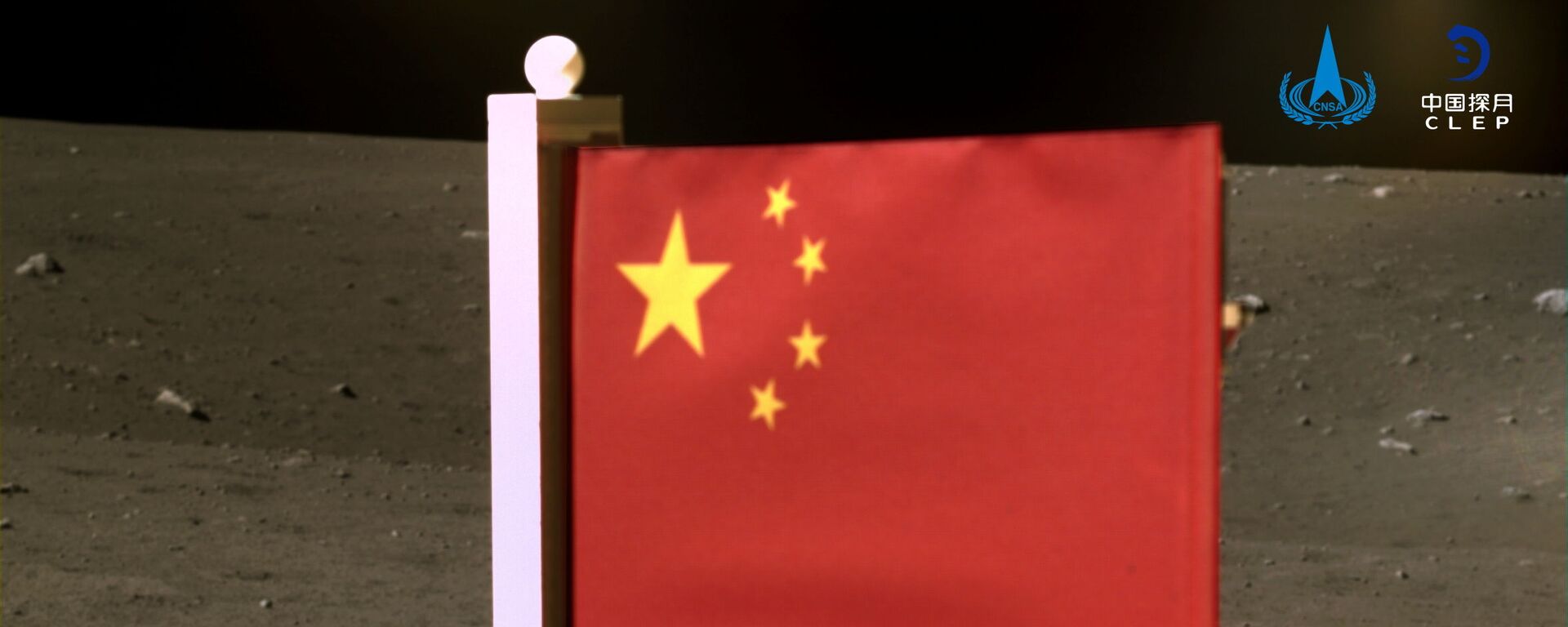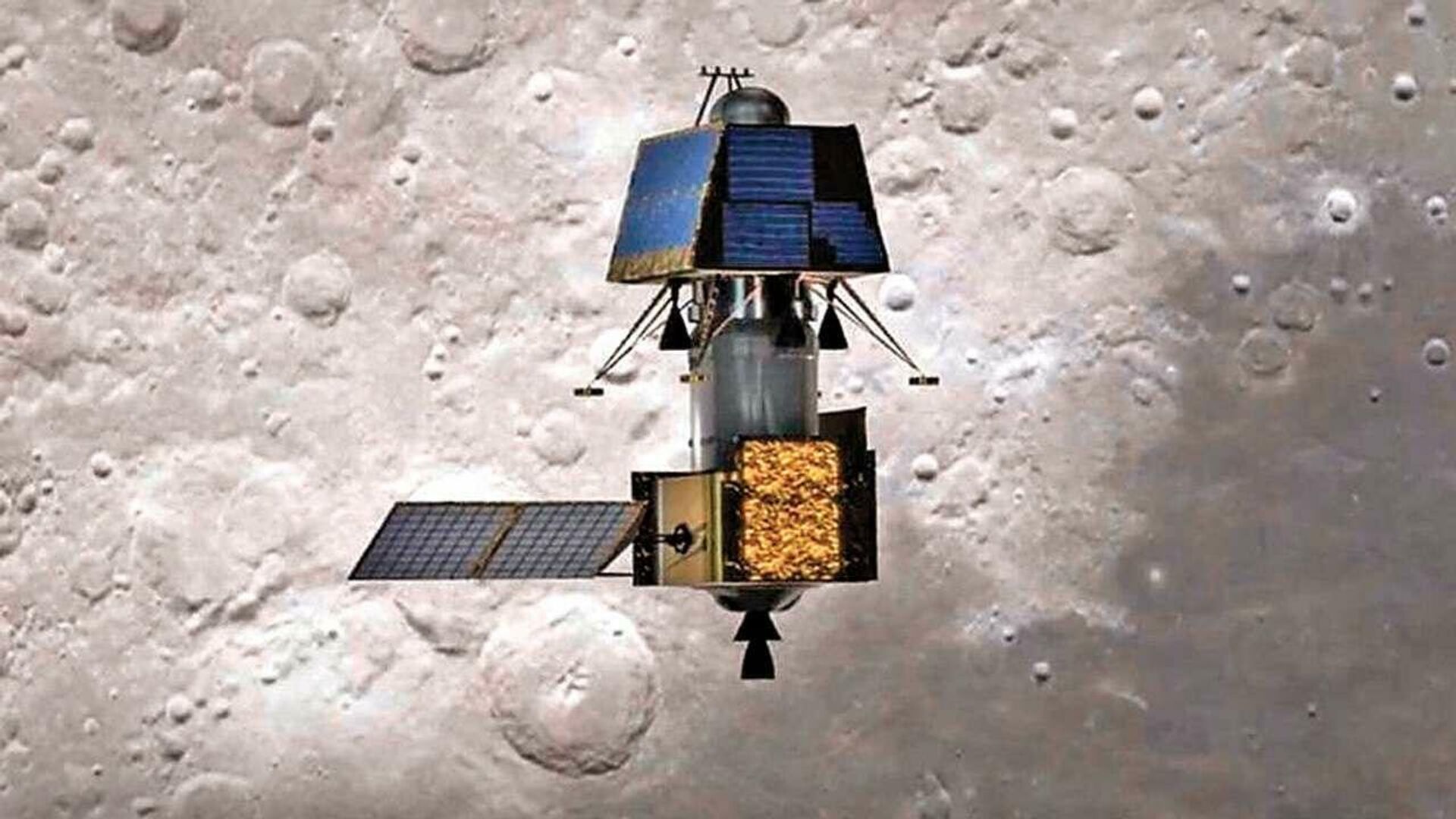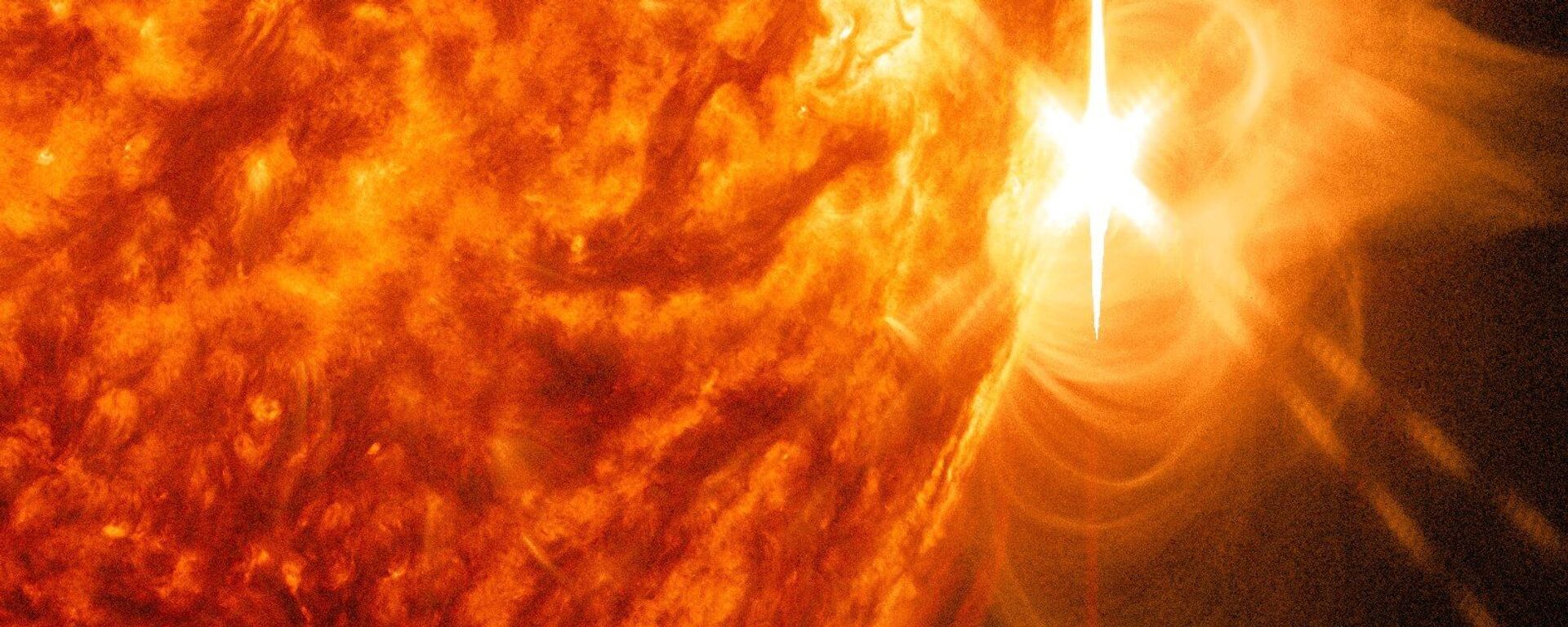https://sputnikglobe.com/20211117/critically-close-indias-chandrayaan-2-narrowly-avoids-collision-with-nasas-lunar-orbiter-1090798773.html
'Critically Close': India's Chandrayaan-2 Narrowly Avoids Collision With NASA's Lunar Orbiter
'Critically Close': India's Chandrayaan-2 Narrowly Avoids Collision With NASA's Lunar Orbiter
Sputnik International
The Indian Space Research Organisation (ISRO) has said that it was the “first time” such a “critically close conjunction” was experienced by an Indian space... 17.11.2021, Sputnik International
2021-11-17T14:56+0000
2021-11-17T14:56+0000
2022-10-19T20:47+0000
nasa
china
indian space research organization (isro)
chandrayaan-2
moon
https://cdn1.img.sputnikglobe.com/img/07e5/0b/11/1090803131_0:0:1280:720_1920x0_80_0_0_ae04faf363a4a79f71a0665110d861c6.jpg
India’s lunar mission Chandrayaan-2 Orbiter (CH2O) last month performed a “collision avoidance manoeuvre (CAM)” to avoid crashing into the Lunar Reconnaissance Orbiter (LRO) belonging to the National Aeronautics and Space Administration (NASA), according to a statement on 15 November from the Indian Space Research Organisation (ISRO), almost a month after the incident.“Over a span of one week before the conjunction, analysis by both ISRO and JPL/NASA consistently showed that the radial separation between the two spacecraft would be less than 100m and the closest approach distance would be only about 3km at the aforementioned time of closest approach,” the official statement went on to say.The ISRO has said that both the space agencies “deemed that the situation warranted a collision avoidance manoeuvre to mitigate the close approach risk, and it was mutually agreed that it should be CH2O to undergo the manoeuvre”.It said that the manoeuvre was “executed” on 18 October at 2.52pm (GMT).The Indian space agency has pointed out that, because of space objects - including debris and operational spacecraft - it is rather “common” for satellites in Earth’s orbit to undergo CAMs to “mitigate” collision risks.The Indian mission has been orbiting the moon for more than two years, after the lunar mission was launched on 22 July 2019. Chandrayaan-2 was India’s second lunar mission (after Chandrayaan-1 in 2008) and was tasked with finding water on the Moon’s surface, with a focus on the "far end (dark side)", or the South Pole of the naturally occurring satellite.The Chandrayaan-2 consisted of three parts at the launch: the lunar orbiter, the lander (named Vikram), and the lunar rover (Pragyaan).The lander lost contact soon after landing on the Moon’s South Pole, the less-explored part of the satellite with reportedly more craters than its other parts.Efforts to locate the crashed Indian lander, including by NASA’s LRO, have as yet proved unsuccessful. The orbiter, however, is continuing its mission of collecting critical lunar data and has a life span of seven years, according to the ISRO.India’s Science and Technology minister revealed this year that work is already in progress to launch the next lunar mission (named Chandrayaan-3), which could be attempted in the latter half of 2022.Only China has achieved the feat in the history of space exploration, when the Chang’e 4 mission successfully did a soft landing near the Moon’s South Pole in January 2019. Russia, the US and China have so far performed a soft landing on the Moon.
https://sputnikglobe.com/20210623/isros-chandrayaan-2-orbiter-unravels-new-mysteries-of-solar-corona--heliophysics-1083223096.html
https://sputnikglobe.com/20201216/chinas-change-5-successfully-returns-to-earth-carrying-lunar-samples-1081483233.html
china
Sputnik International
feedback@sputniknews.com
+74956456601
MIA „Rossiya Segodnya“
2021
News
en_EN
Sputnik International
feedback@sputniknews.com
+74956456601
MIA „Rossiya Segodnya“
Sputnik International
feedback@sputniknews.com
+74956456601
MIA „Rossiya Segodnya“
nasa, china, indian space research organization (isro), chandrayaan-2, moon
nasa, china, indian space research organization (isro), chandrayaan-2, moon
'Critically Close': India's Chandrayaan-2 Narrowly Avoids Collision With NASA's Lunar Orbiter
14:56 GMT 17.11.2021 (Updated: 20:47 GMT 19.10.2022) The Indian Space Research Organisation (ISRO) has said that it was the “first time” such a “critically close conjunction” was experienced by an Indian space exploration mission. It necessitated the performance of an “evasive manoeuvre”.
India’s lunar mission
Chandrayaan-2 Orbiter (CH2O) last month performed a “collision avoidance manoeuvre (CAM)” to avoid crashing into the Lunar Reconnaissance Orbiter (LRO) belonging to the National Aeronautics and Space Administration (NASA), according to a statement on 15 November from the Indian Space Research Organisation (ISRO), almost a month after the incident.
“A very close conjunction between Chandrayaan-2 Orbiter and NASA's LRO was expected to occur on 20 October 2021 at 5.45 UTC (11.15am IST) near the lunar North Pole,” India’s space agency said.
“Over a span of one week before the conjunction, analysis by both ISRO and JPL/NASA consistently showed that the radial separation between the two spacecraft would be less than 100m and the closest approach distance would be only about 3km at the aforementioned time of closest approach,” the official statement went on to say.
The ISRO has said that both the space agencies “deemed that the situation warranted a collision avoidance manoeuvre to mitigate the close approach risk, and it was mutually agreed that it should be CH2O to undergo the manoeuvre”.
It said that the manoeuvre was “executed” on 18 October at 2.52pm (GMT).
“After orbit determination of CH2O with post-manoeuvre tracking data, it was reconfirmed that there would be no further close conjunctions with LRO in the near future with the achieved orbit,” the Indian statement claimed.
The Indian space agency has pointed out that, because of space objects - including debris and operational spacecraft - it is rather “common” for satellites in Earth’s orbit to undergo CAMs to “mitigate” collision risks.
The Indian mission has been orbiting the moon for more than two years, after the lunar mission was launched on 22 July 2019.
Chandrayaan-2 was India’s second lunar mission (after Chandrayaan-1 in 2008) and was tasked with finding water on the Moon’s surface, with a focus on the "far end (dark side)", or the South Pole of the naturally occurring satellite.
The Chandrayaan-2 consisted of three parts at the launch: the lunar orbiter, the lander (named Vikram), and the lunar rover (Pragyaan).
The lander lost contact soon after landing on the Moon’s South Pole, the less-explored part of the satellite with reportedly more craters than its other parts.

16 December 2020, 20:49 GMT
Efforts to locate the crashed Indian lander, including by NASA’s LRO, have as yet proved unsuccessful. The orbiter, however, is continuing its mission of collecting critical lunar data and has a life span of seven years, according to the ISRO.
India’s Science and Technology minister revealed this year that work is already in progress to launch the next lunar mission (named Chandrayaan-3), which could be attempted in the latter half of 2022.
Only China has achieved the feat in the history of space exploration, when the
Chang’e 4 mission successfully did a soft landing near the Moon’s South Pole in January 2019.
Russia, the US and China have so far performed a soft landing on the Moon.



